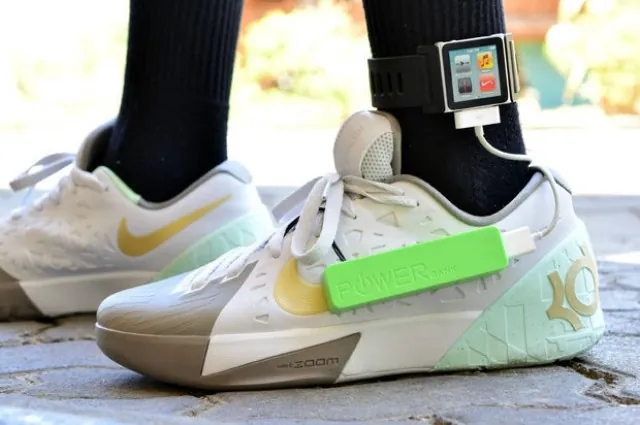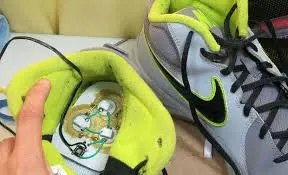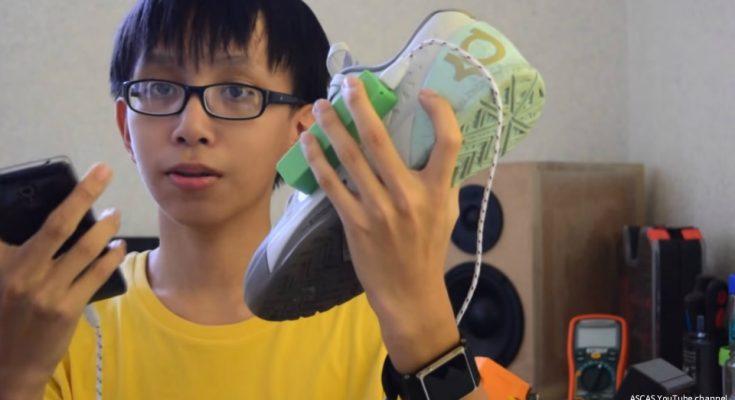In a world increasingly dependent on portable electronics and renewable energy, one Filipino teenager’s innovative solution offers a small but significant step forward. Angelo Casimiro, a 15-year-old student from the Philippines, has garnered international attention for inventing a shoe insole that generates electricity from footsteps using piezoelectric materials. His creation, simple in concept yet impactful in execution, has sparked interest across scientific and engineering communities and inspired young inventors around the globe.

A Footstep Toward Innovation
It all began in the quiet town of Dasmariñas, Cavite, where Angelo, then a high school student, spent his free time tinkering with electronics in his family’s garage. Driven by curiosity and a passion for problem-solving, he explored ways to produce clean energy without the need for expensive infrastructure. It was during one of these experimental sessions that the idea struck him: what if we could harness the kinetic energy generated from walking?
The answer lay in piezoelectricity—a phenomenon where certain materials generate an electric charge in response to mechanical stress. Piezoelectric crystals and ceramics are already used in a variety of devices, from lighter igniters to sensors in medical equipment. Angelo envisioned a more personal, portable use: embedding these materials in shoe insoles to convert each step into usable electric power.

The Mechanics of the Insole
Angelo’s prototype involved embedding piezoelectric disks between layers of soft foam to form an insole. As the wearer walked, their weight applied pressure on the disks, generating small bursts of electrical energy. This electricity could then be stored in a battery or capacitor, ready to charge low-power devices like LED lights or mobile phones.
In testing, Casimiro’s insole was able to produce enough energy to charge a phone for about 10 minutes after two hours of walking. While not yet a replacement for wall chargers, the concept held tremendous potential—especially in areas where electricity is scarce or unreliable.
The insole was connected to a power bank via wires running discreetly up the wearer’s leg, allowing them to charge their devices on the go. It was a practical, user-friendly design that combined comfort, efficiency, and real-world utility.

A Platform for Recognition
Angelo’s invention caught the attention of the global community when he entered it into the Google Science Fair, an international competition that showcases the creativity and innovation of young minds. Out of thousands of participants, Angelo emerged as one of the finalists—the only representative from the Philippines. His project, titled “Energy Generating Shoes,” impressed judges with its combination of scientific rigor and social relevance.
While he didn’t take the grand prize, the exposure he received elevated his status as a young inventor with real promise. Media outlets across the Philippines and internationally reported on the story of the “teen who could charge your phone by walking.” More importantly, his project brought attention to the potential of micro-energy harvesting technologies in underserved communities.
A Vision for Empowering the Underserved
What set Angelo apart was not just his technical know-how but his motivation. In interviews, he emphasized the practical implications of his invention for rural Filipinos who live off-grid or experience frequent power outages. His goal wasn’t merely to win competitions—it was to solve real problems.
“In far-flung provinces,” Angelo said, “people walk long distances every day. Why not turn those steps into something useful?” This thinking reflects a broader movement among young inventors to combine innovation with empathy—technology not just for the sake of advancement, but for the betterment of communities in need.
His project sparked conversations about the democratization of technology—how even small-scale inventions, if accessible and affordable, could make a big difference in people’s lives.
The Science Behind the Steps
Piezoelectric materials have long intrigued scientists and engineers. Typically made from quartz, ceramics like lead zirconate titanate (PZT), or certain polymers, these materials can generate voltage when deformed. Angelo’s approach used small piezoelectric disks—readily available and relatively cheap—embedded strategically in high-pressure points of the foot, such as the heel and ball.
Each step produces a tiny amount of energy—just a few milliwatts. While this isn’t enough to power large devices, it adds up over time. Moreover, the application is environmentally friendly, relying solely on the wearer’s motion, with no emissions or pollution.
The challenge, as Angelo acknowledged, lies in energy efficiency and storage. The electricity generated is intermittent and variable, so an effective circuit is needed to regulate voltage and store the power. He designed a custom-built circuit that included a rectifier and capacitor to address this.
Beyond the Science Fair
Angelo’s journey didn’t end with the competition. Inspired by the feedback he received, he continued to refine his invention, exploring ways to improve energy output and reduce cost. He also started sharing his knowledge on platforms like YouTube, encouraging other young inventors to pursue science and engineering.
His story serves as a beacon for youth in developing countries, showing that innovation isn’t limited to billion-dollar labs or Silicon Valley startups. Sometimes, all it takes is a good idea, a soldering iron, and the determination to make a difference.
The Road Ahead
Though still in its developmental stage, Angelo Casimiro’s energy-generating insole presents a glimpse into the future of wearable technology. In a time when sustainability and accessibility are more important than ever, such inventions could play a key role in reshaping how we power our daily lives.
From a small garage in Cavite to the global stage, Angelo’s journey underscores a powerful message: big ideas can come from the most unexpected places. And sometimes, the future really is just a step away.



